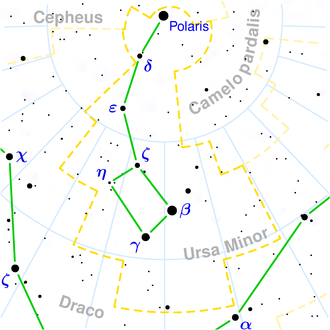NGC 6071
| Galaxy NGC 6071 |
|
|---|---|
|
|
|
| AladinLite | |
| Constellation | Little Bear |
|
Position equinox : J2000.0 , epoch : J2000.0 |
|
| Right ascension | 16 h 02 m 07.0 s |
| declination | + 70 ° 25 ′ 01 ″ |
| Appearance | |
| Morphological type | E-S0 |
| Brightness (visual) | 14.0 mag |
| Brightness (B-band) | 15.0 mag |
| Angular expansion | 1.0 ′ × 1.0 ′ |
| Surface brightness | 14.1 mag / arcmin² |
| Physical data | |
| Redshift | 0.025214 ± 0.000113 |
| Radial velocity | (7559 ± 34) km / s |
|
Stroke distance v rad / H 0 |
(346 ± 24) x 10 6 ly (106.0 ± 7.4) Mpc |
| history | |
| discovery | Wilhelm Herschel |
| Discovery date | May 6, 1791 |
| Catalog names | |
| NGC 6071 • UGC 10157 • PGC 56767 • CGCG 338-041 • MCG + 12-15-047 • IRAS 16011 + 7044 • 2MASX J16020708 + 7025018 • GC 4165 • H III 883 • GALEX ASC J160207.27 + 702500.0 • LDCE 1165 NED002 | |
NGC 6071 is a 14.0 mag bright elliptical galaxy of the Hubble type E-S0 in the constellation Little Bear in the northern sky . It is estimated to be 346 million light years from the Milky Way and about 100,000 light years in diameter.
In the same area of the sky are u. a. the galaxies NGC 6079 and IC 1187 .
The object was discovered on May 6, 1791 by Wilhelm Herschel with an 18.7-inch reflector telescope, who described it as "eF, vS, verified with 300 powe".
